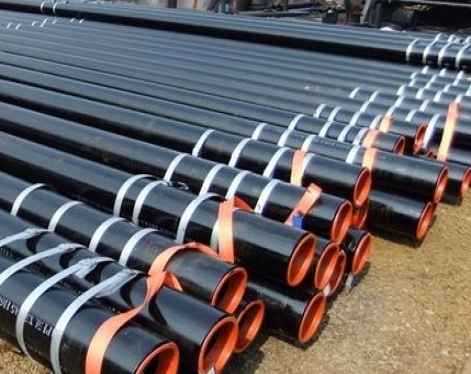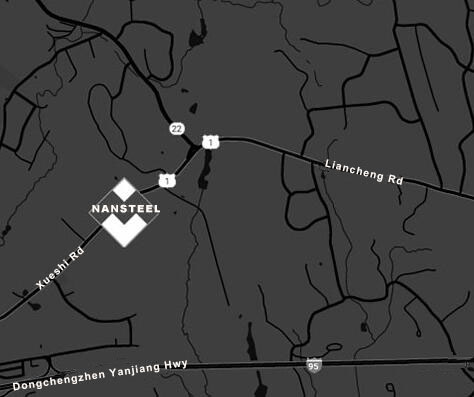Ensuring the quality of non-standard seamless steel pipes is a systematic project involving multiple links. Due to its "non-standard" characteristics, it requires close cooperation and strict control between the supply and demand sides. Nansteel Manufacturing Co., Ltd has carefully summarized the steps to ensure the quality of non-standard seamless steel pipes from the aspects of design, production, and inspection:
Design stage
Dimension requirements: including outer diameter, inner diameter, wall thickness, length and their allowable deviations. It is best to provide detailed drawings indicating key dimensions and tolerances.
Material requirements: Specify the material grade of the steel pipe, such as carbon steel (20#, 45#, Q345B), alloy steel (16Mn, 15CrMoG), stainless steel (304, 316L), etc. If alloy steel with special composition is required, a detailed chemical composition range needs to be provided.
Mechanical properties requirements: including tensile strength, yield strength, elongation, impact toughness, hardness, etc.
Chemical performance requirements: For example, corrosion resistance, high temperature resistance, low temperature resistance, etc. For specific corrosive media, corrosion test requirements need to be provided.
Surface treatment requirements: such as internal and external surface finish, pickling, phosphating, coating, galvanizing, etc.
Other special requirements: such as delivery status (hot rolling, cold drawing, normalizing, etc.), flaw detection requirements, non-destructive testing methods, metallographic structure requirements, etc.

Production stage
Select suitable tube blanks: The supplier needs to select suitable tube blanks according to the material requirements of the buyer and inspect the tube blanks to ensure that their quality meets the requirements.
Develop a reasonable production process: The supplier needs to develop a reasonable production process based on the special requirements of non-standard steel pipes, including heating temperature, rolling parameters, heat treatment process, cold processing process, etc.
Strict control of the production process: During the production process, various process parameters need to be strictly controlled and necessary intermediate inspections must be carried out to ensure product quality.
Use appropriate production equipment and molds: For non-standard sizes, special molds and tooling may need to be customized to ensure molding accuracy.
Inspection stage
Raw material inspection
Inspect the chemical composition, mechanical properties, dimensions, etc. of the tube blank.
Process Inspection
Carry out necessary intermediate inspections during the production process, such as dimensional inspection, surface quality inspection, etc.
Finished product inspection
Carry out comprehensive inspection on finished steel pipes, including:
Dimension inspection: Use calipers, tape measures and other tools to measure the dimensions of the steel pipe to ensure that it meets the drawing or contract requirements.
Mechanical properties test: Conduct tensile test, yield test, impact test, hardness test, etc. to ensure that the mechanical properties meet the requirements.
Chemical composition analysis: Analyze the chemical composition of the steel pipe to ensure that it meets the requirements.
Surface quality inspection: Check whether there are cracks, scratches, scale, rust and other defects on the surface of the steel pipe.
Nondestructive testing: Ultrasonic testing, eddy current testing, magnetic particle testing, etc. are carried out as needed to detect whether there are defects inside the steel pipe.
Metallographic inspection (if necessary): The metallographic structure of the steel pipe is analyzed to uate its heat treatment effect and internal quality.
Other special tests: Other special tests are carried out according to the contract requirements, such as corrosion test, expansion test, flattening test, etc.
Provide inspection report: The supplier needs to provide the buyer with a detailed inspection report to prove that the product meets the contract requirements.
Quality Management System
Suppliers should establish a sound quality management system, such as the ISO 9001 quality management system, to effectively control and manage the production process to ensure the stability and reliability of product quality.
Responsibilities of both suppliers and buyers
Buyer: Accurately put forward technical requirements, participate in technical communication and confirmation, and conduct necessary arrival inspection.
Supplier: Produce strictly in accordance with the contract requirements and provide qualified products and relevant technical documents.
In short, ensuring the quality of non-standard seamless steel pipes requires the joint efforts of both supply and demand sides, and strict control of each link such as design, production, and inspection. Only in this way can we ensure that non-standard seamless steel pipes can meet the needs of special projects and applications.
Read more: Non-standard Seamless Pipe Meaning, Characteristics and Application
Design stage
1. Clarify technical requirements
This is the basis for ensuring the quality of non-standard seamless steel pipes. The demander (purchaser) needs to provide detailed technical requirements to the supplier (producer), including:Dimension requirements: including outer diameter, inner diameter, wall thickness, length and their allowable deviations. It is best to provide detailed drawings indicating key dimensions and tolerances.
Material requirements: Specify the material grade of the steel pipe, such as carbon steel (20#, 45#, Q345B), alloy steel (16Mn, 15CrMoG), stainless steel (304, 316L), etc. If alloy steel with special composition is required, a detailed chemical composition range needs to be provided.
Mechanical properties requirements: including tensile strength, yield strength, elongation, impact toughness, hardness, etc.
Chemical performance requirements: For example, corrosion resistance, high temperature resistance, low temperature resistance, etc. For specific corrosive media, corrosion test requirements need to be provided.
Surface treatment requirements: such as internal and external surface finish, pickling, phosphating, coating, galvanizing, etc.
Other special requirements: such as delivery status (hot rolling, cold drawing, normalizing, etc.), flaw detection requirements, non-destructive testing methods, metallographic structure requirements, etc.

2. Technical communication and confirmation
The supply and demand parties need to conduct sufficient technical communication to ensure that the supplier fully understands the demander's technical requirements and uates whether its own technical capabilities and production conditions can meet the requirements. If necessary, a technical agreement can be signed as an annex to the contract.3. Reference to relevant standards
Even for non-standard products, relevant national standards, industry standards or international standards should be referred to as much as possible, such as GB/T 8162, GB/T 8163, ASTM A106, API 5L, etc., to ensure that the basic performance of the product meets the requirements. For example, even if the external dimensions are non-standard, its mechanical properties and chemical composition can also be implemented with reference to relevant standards.Production stage
Select suitable tube blanks: The supplier needs to select suitable tube blanks according to the material requirements of the buyer and inspect the tube blanks to ensure that their quality meets the requirements.
Develop a reasonable production process: The supplier needs to develop a reasonable production process based on the special requirements of non-standard steel pipes, including heating temperature, rolling parameters, heat treatment process, cold processing process, etc.
Strict control of the production process: During the production process, various process parameters need to be strictly controlled and necessary intermediate inspections must be carried out to ensure product quality.
Use appropriate production equipment and molds: For non-standard sizes, special molds and tooling may need to be customized to ensure molding accuracy.
Inspection stage
Raw material inspection
Inspect the chemical composition, mechanical properties, dimensions, etc. of the tube blank.
Process Inspection
Carry out necessary intermediate inspections during the production process, such as dimensional inspection, surface quality inspection, etc.
Finished product inspection
Carry out comprehensive inspection on finished steel pipes, including:
Dimension inspection: Use calipers, tape measures and other tools to measure the dimensions of the steel pipe to ensure that it meets the drawing or contract requirements.
Mechanical properties test: Conduct tensile test, yield test, impact test, hardness test, etc. to ensure that the mechanical properties meet the requirements.
Chemical composition analysis: Analyze the chemical composition of the steel pipe to ensure that it meets the requirements.
Surface quality inspection: Check whether there are cracks, scratches, scale, rust and other defects on the surface of the steel pipe.
Nondestructive testing: Ultrasonic testing, eddy current testing, magnetic particle testing, etc. are carried out as needed to detect whether there are defects inside the steel pipe.
Metallographic inspection (if necessary): The metallographic structure of the steel pipe is analyzed to uate its heat treatment effect and internal quality.
Other special tests: Other special tests are carried out according to the contract requirements, such as corrosion test, expansion test, flattening test, etc.
Provide inspection report: The supplier needs to provide the buyer with a detailed inspection report to prove that the product meets the contract requirements.
Quality Management System
Suppliers should establish a sound quality management system, such as the ISO 9001 quality management system, to effectively control and manage the production process to ensure the stability and reliability of product quality.
Responsibilities of both suppliers and buyers
Buyer: Accurately put forward technical requirements, participate in technical communication and confirmation, and conduct necessary arrival inspection.
Supplier: Produce strictly in accordance with the contract requirements and provide qualified products and relevant technical documents.
In short, ensuring the quality of non-standard seamless steel pipes requires the joint efforts of both supply and demand sides, and strict control of each link such as design, production, and inspection. Only in this way can we ensure that non-standard seamless steel pipes can meet the needs of special projects and applications.
Read more: Non-standard Seamless Pipe Meaning, Characteristics and Application









